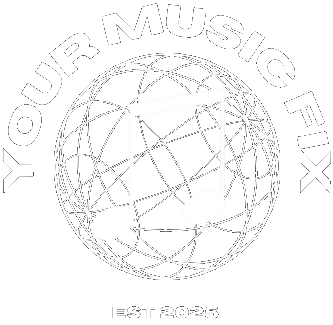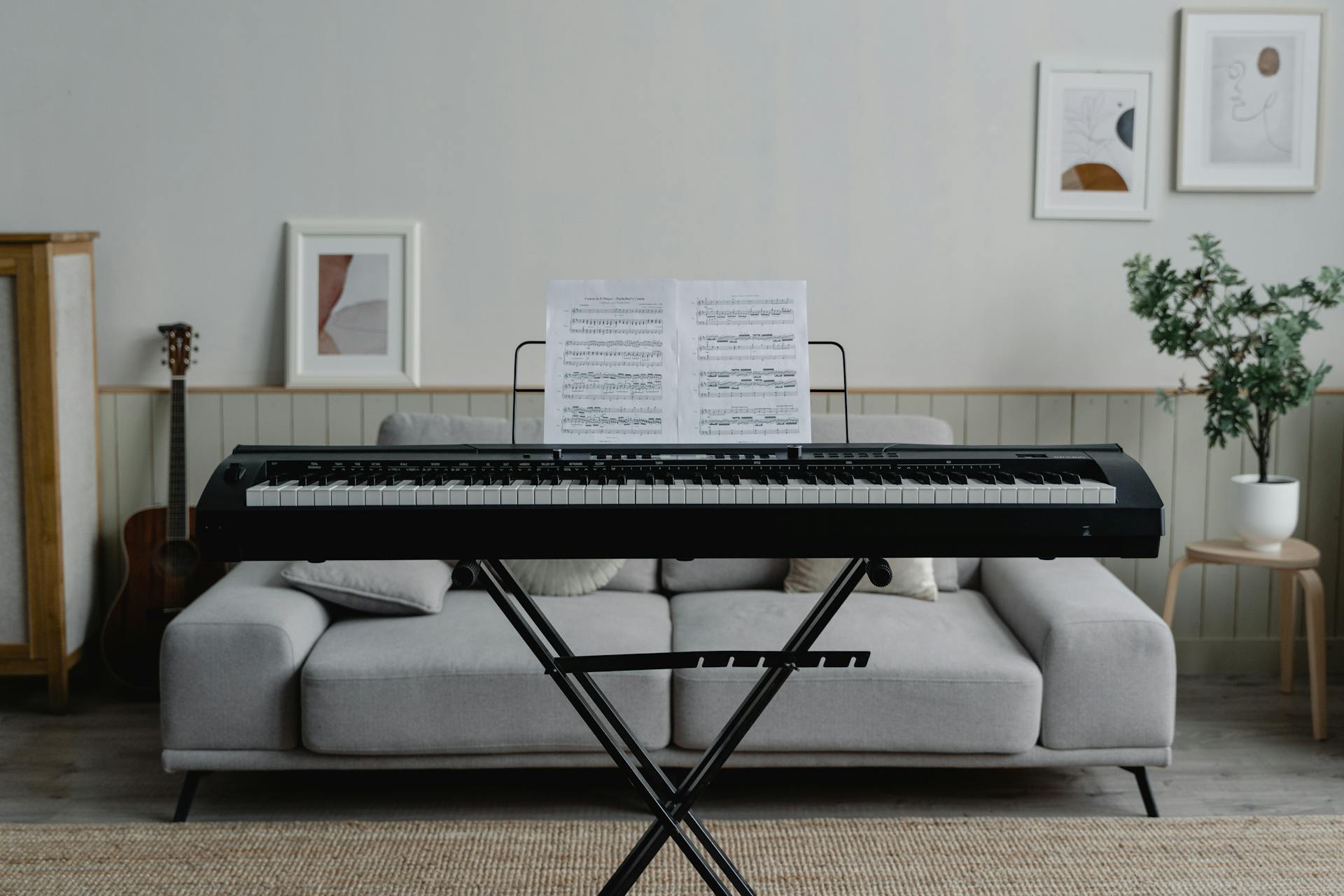The journey into piano playing starts with choosing the right instrument. For beginners looking to embark on this musical adventure, a digital piano offers the perfect balance of authentic piano experience, convenience, and affordability. In this comprehensive guide, we’ll explore everything you need to know to choose the best digital piano for beginners.
If you’re looking for the best beginner MIDI keyboard, check this article out.
Table of Contents
- 1 Introduction to Digital Pianos
- 2 Why Digital Pianos Are Ideal for Beginners
- 3 Key Features to Consider
- 4 Understanding Weighted Keys and Key Action
- 5 The Importance of Sound Quality
- 6 Best Digital Piano Brands
- 7 Top Digital Pianos for Beginners
- 8 How Much Does a Digital Piano Cost?
- 9 Digital Piano vs. Keyboard: What’s the Difference?
- 10 Setting Up Your Digital Piano
- 11 Maintenance and Care
- 12 Frequently Asked Questions
- 12.1 How long does it take to learn piano as a beginner?
- 12.2 Do I need a teacher, or can I learn piano on my own?
- 12.3 How much should I practice as a beginner?
- 12.4 Can I learn piano if I don’t read music?
- 12.5 What’s the best age to start learning piano?
- 12.6 Can digital pianos reproduce the sound and feel of acoustic pianos?
- 13 Conclusion
Introduction to Digital Pianos
Digital pianos have revolutionized how beginners learn to play. Unlike their acoustic counterparts, digital pianos use advanced electronic technology to replicate the sound and feel of an acoustic piano while offering additional features that enhance the learning experience.
The technology inside digital pianos has improved dramatically in recent years. Today’s models produce incredibly realistic piano tones sampled from high-end concert grand pianos, with key actions that simulate the mechanical response of an acoustic piano’s hammers and strings.
Why Digital Pianos Are Ideal for Beginners
Digital pianos offer several advantages that make them especially suitable for beginners:
- Consistent sound quality: Unlike acoustic pianos that require regular tuning, digital pianos always produce correctly tuned notes.
- Volume control: Practice any time without disturbing others by using headphones.
- Portability: Most digital pianos are lighter and easier to move than acoustic models.
- Learning features: Many digital pianos include built-in metronomes, recording capabilities, and sometimes interactive learning tools.
- Affordability: Digital pianos generally cost less than acoustic pianos and require no additional tuning or maintenance expenses.
- Space efficiency: Digital pianos take up less space than acoustic uprights or grands, making them ideal for smaller living spaces.
Key Features to Consider
When shopping for a beginner digital piano, these are the essential features to evaluate:
1. Keyboard Action
The responsiveness and feel of the keys significantly impact your learning experience. For beginners, it’s crucial to develop proper finger strength and technique from the start.
Look for:
- Fully weighted keys: These offer resistance similar to an acoustic piano
- Graded hammer action: Keys that are heavier in the bass and lighter in the treble, just like an acoustic piano
- Touch sensitivity: The ability to play softer or louder based on how hard you press the keys
2. Sound Quality
The piano sound is the foundation of your musical experience:
- Sound engine: Higher quality sampling or modeling technology produces more authentic piano sounds
- Polyphony: Higher polyphony count (at least 64, preferably 128 or more) ensures notes don’t cut off when playing complex pieces
- Speaker system: Better speakers deliver richer, more detailed sound
3. Key Count
A full-size piano has 88 keys. While some beginner models offer 76 or even 61 keys, an 88-key instrument allows you to play any piano composition without limitations as your skills advance.
4. Connectivity Options
Modern connectivity enhances the learning experience:
- USB ports: Connect to computers or mobile devices
- Bluetooth: Wireless connection for learning apps
- Audio inputs/outputs: For recording or connecting to external speakers
- Headphone jack: Essential for silent practice
5. Additional Features
These extras can enhance your learning journey:
- Built-in recorder: Record your practice sessions to track progress
- Metronome: Helps develop timing and rhythm
- Learning modes/split keyboard: Some models allow teacher and student to play in the same register simultaneously
- Built-in lessons: Pre-programmed lessons for beginners
Understanding Weighted Keys and Key Action
The “feel” of the keys is perhaps the most important aspect of a digital piano for beginners. This is determined by the key action – the mechanical system that creates resistance when you press a key and returns it to its resting position when released.
Types of Key Actions
There are several types of key actions in digital pianos:
- Fully Weighted Action: Uses weights to recreate the resistance of an acoustic piano. Good for beginners developing proper finger strength.
- Graded Hammer Action: A more sophisticated system where the lower keys are heavier than the higher keys, exactly like an acoustic piano. This is the gold standard for beginners serious about learning proper technique.
- Semi-Weighted Action: A lighter action that uses springs with some additional weights. Less ideal for beginners focused on classical training.
- Unweighted/Synth Action: Primarily found in keyboards rather than digital pianos, these provide little resistance and aren’t recommended for serious piano learners.
For beginners with classical piano aspirations, a graded hammer action keyboard is strongly recommended. The extra investment pays dividends in proper technique development.
The Importance of Sound Quality
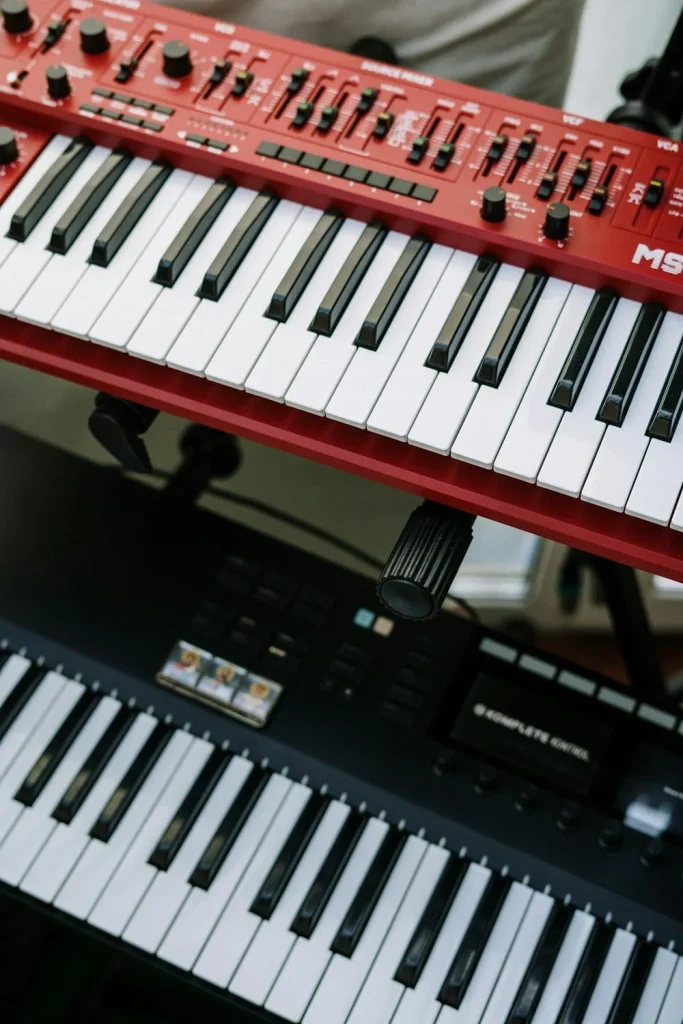
While key action develops your technique, sound quality inspires your musicality. Digital pianos recreate piano sounds through either sampling or modeling technology:
Sampling Technology
Most digital pianos use sampling, which involves recording actual acoustic pianos, note by note, at different dynamics. Higher-end models capture more detail with:
- Multiple velocity layers (capturing the same note at different loudness levels)
- Longer samples that preserve the natural decay of notes
- Resonance effects that simulate string interactions in an acoustic piano
Modeling Technology
Some advanced digital pianos use physical modeling, which mathematically simulates the complex behaviors of an acoustic piano. This can produce exceptionally responsive, natural-sounding results.
For beginners, a digital piano with quality multi-sampled sounds and at least 128-note polyphony provides a good foundation for developing musical expression.
Best Digital Piano Brands
The digital piano market features several reputable manufacturers known for quality instruments across various price points. Here’s a snapshot of the most respected brands:
Yamaha

Yamaha stands as one of the most trusted names in both acoustic and digital pianos. Their digital piano lineup ranges from affordable beginner models to concert-quality instruments. Yamaha digital pianos are known for their realistic key action and clear, bright piano tones derived from their acclaimed concert grand pianos.
Roland

Roland has built its reputation on cutting-edge technology. Their SuperNATURAL piano modeling delivers exceptionally responsive sounds that adapt naturally to your playing. Roland digital pianos generally offer a softer, more mellow tone compared to some competitors, with an expressive key action that many players find comfortable.
Kawai

With a long history of crafting premium acoustic pianos, Kawai brings that expertise to their digital instruments. Kawai digital pianos are celebrated for their realistic wooden-key actions and warm, rich tones. Their attention to the tactile experience makes them a favorite among traditional pianists.
Casio

Casio has evolved from basic keyboards to sophisticated digital pianos that offer impressive value. Their Privia and Celviano lines feature well-engineered key actions and quality sound at competitive prices, making them popular choices for beginners and budget-conscious pianists.
Korg

Korg digital pianos offer distinctive sounds and innovative features. While perhaps better known for synthesizers, their piano line includes models with exceptional key actions and unique sound libraries that appeal to versatile musicians.
Top Digital Pianos for Beginners
Based on key features, sound quality, key action, and value for beginners, these digital pianos stand out in 2025:
Entry-Level
At this price point, look for instruments that provide the essential features needed to develop proper technique:
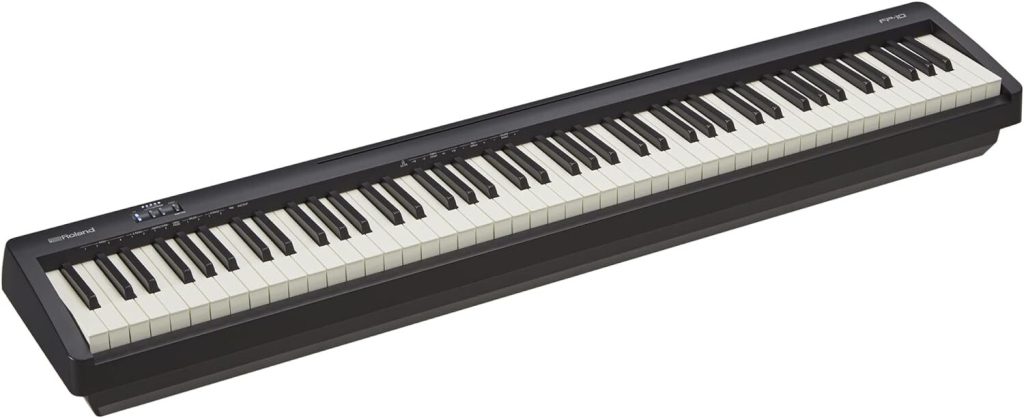
Roland FP-10 The Roland FP-10 delivers an exceptional playing experience in the entry-level category. It features Roland’s PHA-4 Standard keyboard with escapement and ivory feel textures, offering a responsive, authentic feel that’s rare at this price point. The SuperNATURAL Piano sound engine provides rich, expressive tones that respond naturally to your touch. Despite its affordable price, the FP-10 doesn’t compromise on essential features for beginners. Get it here.

Casio Privia PX-S1100 The ultra-slim Casio Privia PX-S1100 combines portability with an impressive key action. Its Smart Scaled Hammer Action Keyboard provides a convincing piano feel, while the AiR Sound Source delivers detailed acoustic piano tones. With its sleek design and Bluetooth connectivity, it’s perfect for beginners with limited space who don’t want to sacrifice quality. Get it here.
Mid-Range
These instruments offer improved sound quality, better key action, and additional features that enhance the learning experience:
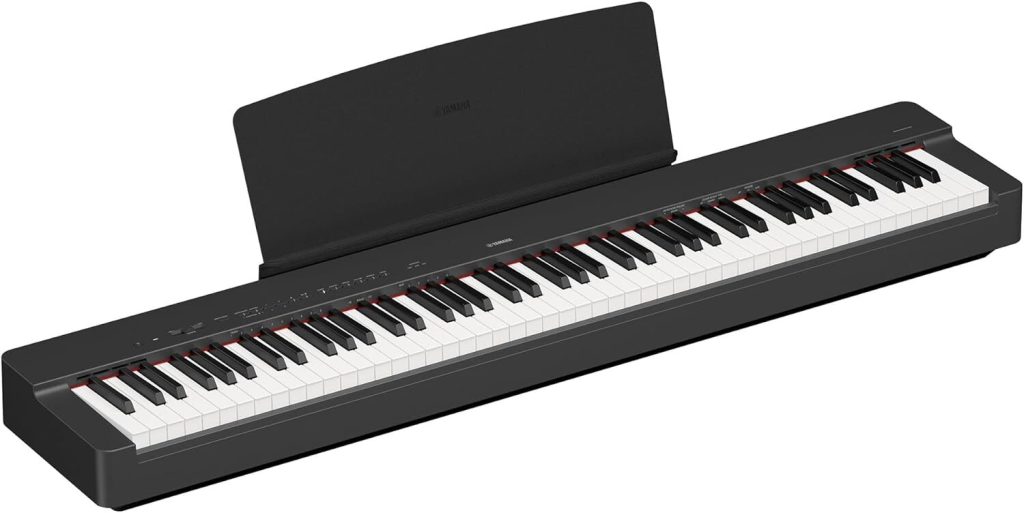
Yamaha P-225 The successor to the popular P-125, the Yamaha P-225 features Yamaha’s GHS (Graded Hammer Standard) keyboard for authentic feel and response. Its piano samples come from Yamaha’s renowned CFX concert grand, providing rich, detailed sound. The built-in speakers deliver impressive sound for practice, while USB connectivity allows integration with learning apps. Get it here.

Roland FP-30X The Roland FP-30X builds on the foundation of the FP-10 with enhanced features. It offers the same high-quality PHA-4 Standard keyboard but adds improved speakers, more built-in sounds, and enhanced connectivity options. The SuperNATURAL Piano sound engine provides exceptional expressiveness, responding naturally to your touch from gentle pianissimo to thundering fortissimo. Get it here.

Kawai ES120 The Kawai ES120 features the Responsive Hammer Compact II action with grade-weighted keys that provide a remarkably authentic piano feel. Its Harmonic Imaging sound technology captures the rich, warm tone of Kawai’s acoustic grand pianos. Particularly notable is its key action, which many consider to be among the most realistic in this price range. Get it here.
Premium Beginner Models
For beginners committed to long-term piano study, these instruments provide a more complete piano experience:
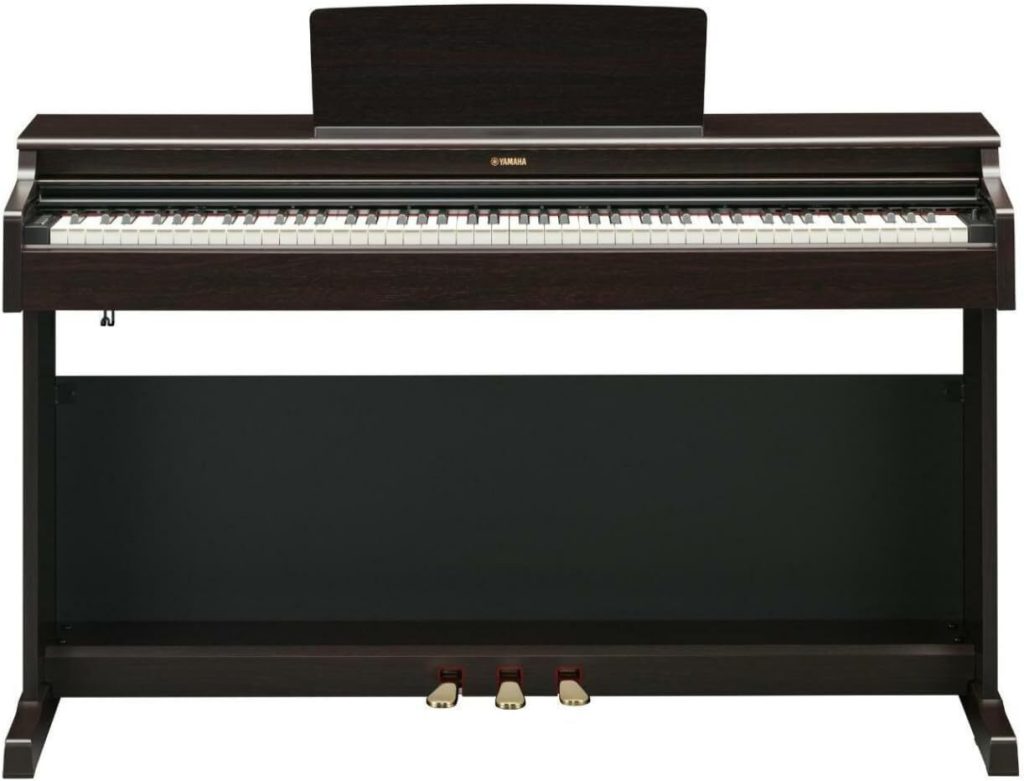
Yamaha YDP-165 (Arius) This console-style digital piano features Yamaha’s GH3 (Graded Hammer 3) action with synthetic ebony and ivory key surfaces for improved grip and feel. The CFX sampling provides concert grand piano sound that will inspire beginners. The traditional cabinet design makes it a handsome addition to any home. Get it here.
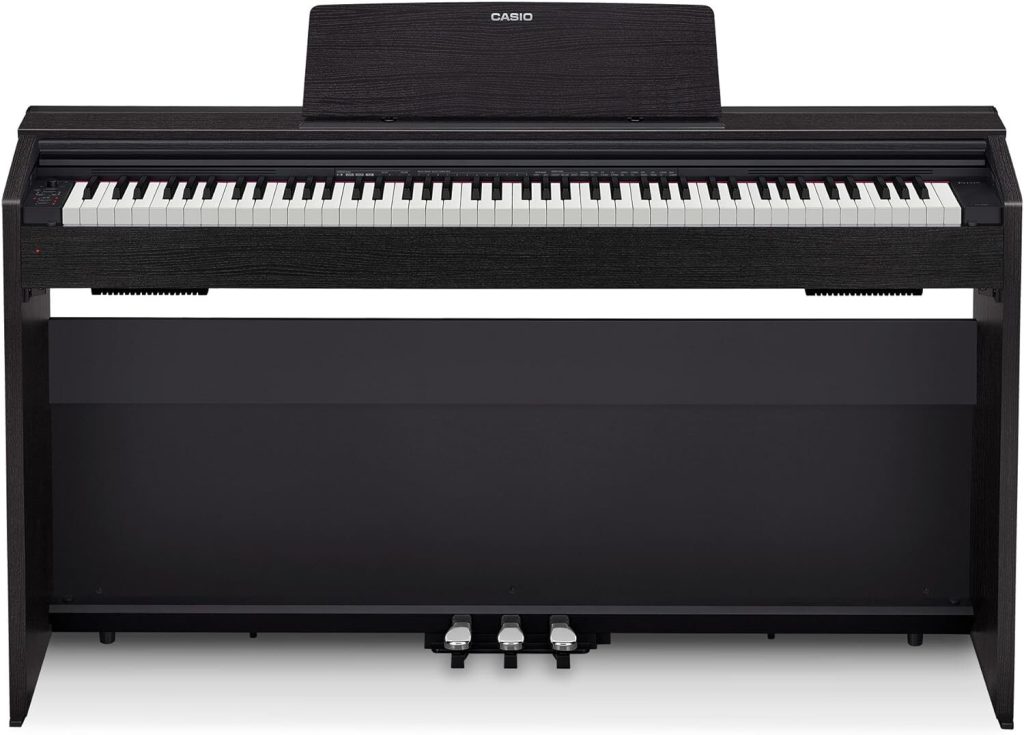
Casio PX-870 The flagship of Casio’s Privia line offers an impressive four-speaker sound system that projects a rich, immersive piano experience. Its Tri-sensor Scaled Hammer Action Keyboard II provides precise response, while the AiR Sound Source delivers detailed, nuanced grand piano sounds with string resonance and damper effects. Get it here.
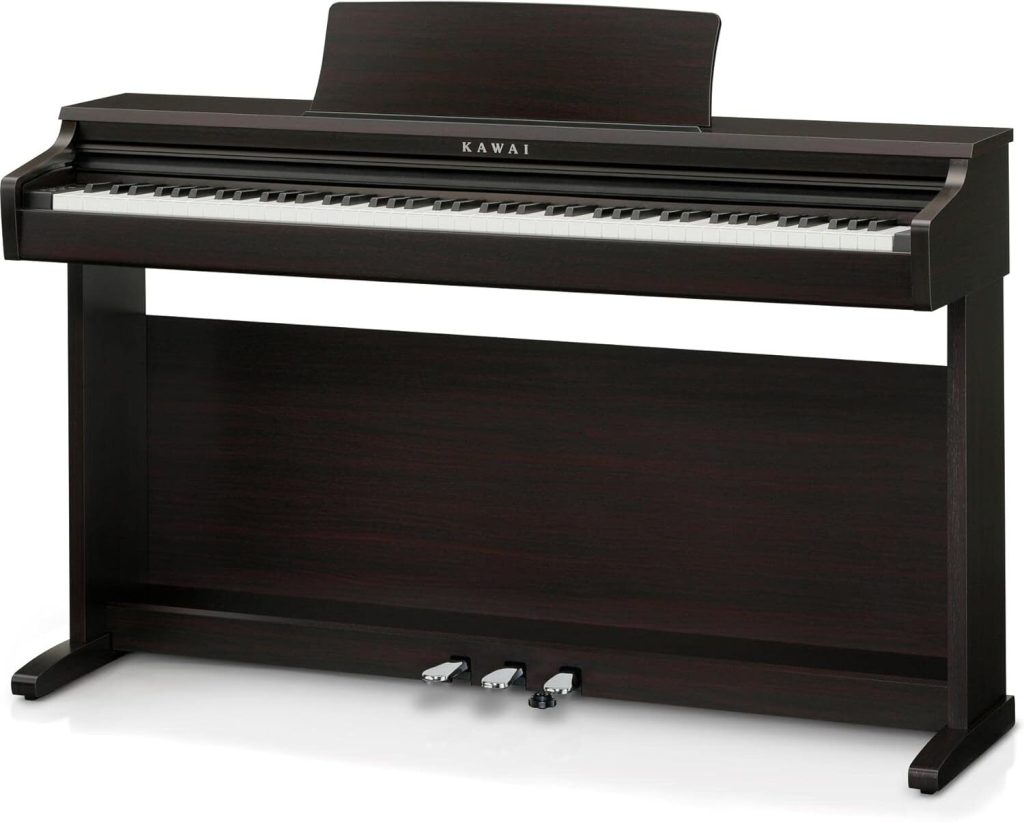
Kawai KDP120 The Kawai KDP120 console digital piano features Kawai’s Responsive Hammer Compact II action and progressive harmonic imaging sound technology. Its traditional cabinet houses a powerful 4-speaker system that provides rich, room-filling sound. Particularly notable is the authentic key action that helps beginners develop proper technique from the start. Get it here.
How Much Does a Digital Piano Cost?
Digital piano prices vary widely based on key action quality, sound technology, and features. Here’s what to expect at different price points in 2025:
Entry-Level ($300-$500)
Digital pianos in this range typically feature:
- Basic weighted key actions
- Decent piano sounds with adequate polyphony (64-128 notes)
- Essential connectivity (USB, headphone jack)
- Compact, portable designs
These instruments provide the fundamentals needed to begin learning piano without a significant financial investment. They’re ideal for beginners unsure of their long-term commitment.
Mid-Range ($500-$1000)
At this price point, you’ll find noticeable improvements:
- More sophisticated graded hammer actions
- Better quality sampling with more detail
- Higher polyphony counts (128-192 notes)
- Improved speaker systems
- Additional connectivity options (Bluetooth, audio I/O)
- More onboard sounds and features
These pianos offer a good balance of quality and affordability, making them popular choices for serious beginners and intermediate players.
Premium Beginner/Intermediate ($1000-$2000)
Instruments in this range feature:
- High-quality hammer actions, sometimes with wooden elements
- Advanced sound engines with detailed sampling or modeling
- Higher polyphony (192-256 notes)
- Superior speaker systems with better dynamic range
- Complete connectivity options
- Console-style cabinets for home use
These digital pianos provide an experience much closer to an acoustic piano and will serve students well through intermediate and even advanced stages of learning.
Advanced ($2000+)
While beyond most beginners’ needs, these premium instruments offer:
- Sophisticated wooden-key actions nearly indistinguishable from acoustic pianos
- State-of-the-art sound reproduction through advanced sampling or modeling
- Premium cabinet construction and finish options
- High-end speaker systems with rich, nuanced sound reproduction
These represent significant investments more appropriate for committed students, teachers, and performers.
Digital Piano vs. Keyboard: What’s the Difference?
The terms “digital piano” and “keyboard” are often used interchangeably, but they represent different instruments with distinct purposes:
Digital Pianos
- Designed to replicate the acoustic piano experience
- Feature 88 fully weighted, touch-sensitive keys
- Focus on realistic piano sounds and response
- Usually have fewer sounds overall but higher quality piano tones
- Often built with furniture-style cabinets or portable slab designs
- Appropriate for classical training and serious piano study
Keyboards
- Designed for versatility across musical styles
- Often have 61 or 76 keys that are unweighted or semi-weighted
- Include hundreds of instrumental sounds, rhythms, and effects
- Emphasis on variety rather than piano authenticity
- Lightweight and highly portable
- Better suited for versatile playing across multiple genres than for classical piano technique
For beginners committed to learning proper piano technique, a digital piano with weighted keys is strongly recommended over a keyboard. The development of proper finger strength and technique from the beginning will pay dividends throughout your musical journey.
Setting Up Your Digital Piano
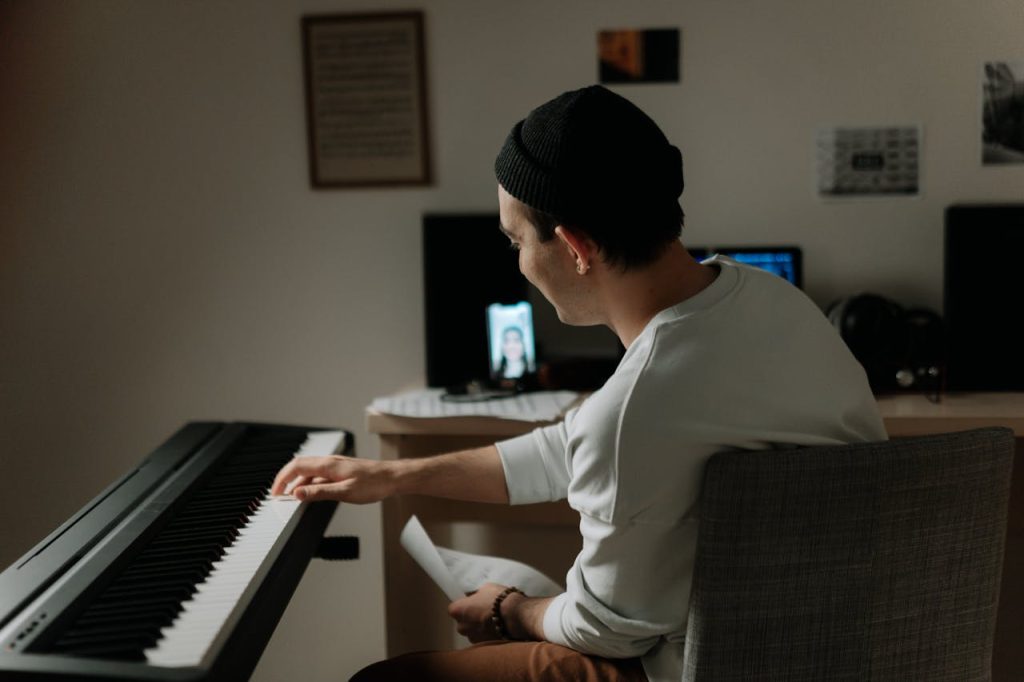
Creating an optimal practice environment helps beginners establish good habits:
Proper Positioning
- Place the piano on a stable, level surface
- Position the keyboard height so your forearms are parallel to the floor when playing
- Ensure adequate lighting to read music without strain
- Allow enough space for proper posture and arm movement
Essential Accessories
- Adjustable bench: Critical for proper posture and playing position
- Headphones: Quality headphones provide better sound detail for practice
- Sustain pedal: If not included, this is an essential addition for expressive playing
- Music rest: Sturdy support for sheet music (usually built-in)
Creating a Dedicated Practice Space
Designate a specific area for your piano practice that:
- Minimizes distractions
- Has good acoustic properties (not too reverberant)
- Provides comfortable temperature and lighting
- Encourages regular practice by being easily accessible
A well-arranged practice space makes daily practice more inviting and productive.
Maintenance and Care
Digital pianos require minimal maintenance compared to acoustic instruments, but proper care ensures longevity:
Regular Cleaning
- Dust keys regularly with a soft, dry cloth
- Clean the cabinet with products appropriate for its finish
- Keep liquids away from the keyboard and electronics
Environmental Considerations
- Avoid placing the instrument in direct sunlight
- Maintain moderate humidity levels (extreme dryness or moisture can damage electronics)
- Keep away from heating vents, air conditioners, and open windows
Power Management
- Use a surge protector to prevent damage from power fluctuations
- Power off when not in use for extended periods
- Follow manufacturer guidelines for power adapters and connections
With proper care, a quality digital piano can provide reliable service for many years.
Frequently Asked Questions
How long does it take to learn piano as a beginner?
Learning piano is a journey rather than a destination. Most beginners can play simple pieces within 3-6 months of regular practice. Developing intermediate skills typically takes 1-2 years of consistent study. Remember that even professional pianists consider themselves lifelong learners.
Do I need a teacher, or can I learn piano on my own?
While self-teaching is possible with online resources and method books, a qualified teacher provides invaluable guidance on technique, interpretation, and musical development. Consider at least occasional lessons to ensure you’re developing proper habits, even if you primarily learn independently.
How much should I practice as a beginner?
Quality matters more than quantity. For beginners, 20-30 minutes of focused daily practice yields better results than occasional marathon sessions. Consistency is key to developing muscle memory and technical skills.
Can I learn piano if I don’t read music?
Yes, though learning to read music will ultimately expand your musical horizons. Many beginners start with learning by ear or using alternative notation systems, then gradually incorporate traditional music reading.
What’s the best age to start learning piano?
Piano can be learned at any age. Children typically start around age 6-7 when they have the necessary attention span and finger dexterity. Adult beginners often progress quickly due to their motivation and cognitive abilities. It’s never too late to start!
Can digital pianos reproduce the sound and feel of acoustic pianos?
High-quality digital pianos come remarkably close to the acoustic experience. While subtle differences remain, modern digital pianos provide an authentic enough experience for beginners and intermediate players. Many advanced pianists also use digital instruments for practice and performance.
Conclusion
Selecting the right digital piano as a beginner lays the foundation for your musical journey. By understanding the key features that matter most—weighted keys, sound quality, and essential functions—you can make an informed choice that supports your development as a pianist.
Remember that the best digital piano for you balances quality, features, and budget in a way that meets your specific needs and goals. While higher-priced models offer enhanced experiences, even entry-level digital pianos from reputable manufacturers can provide everything a beginner needs to start developing proper technique and musical expression.
Whichever instrument you choose, regular practice and proper guidance will ultimately determine your progress. Your digital piano is both a powerful learning tool and a gateway to the lifelong joy of making music.
Happy playing!
